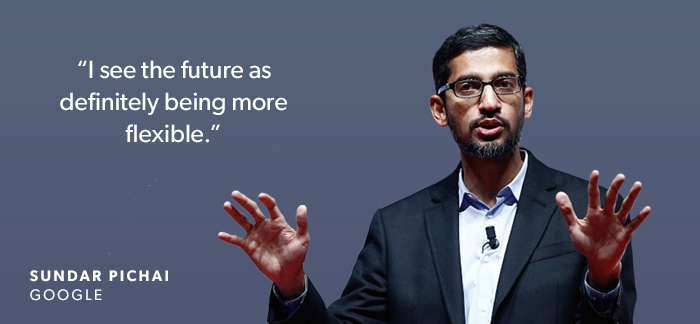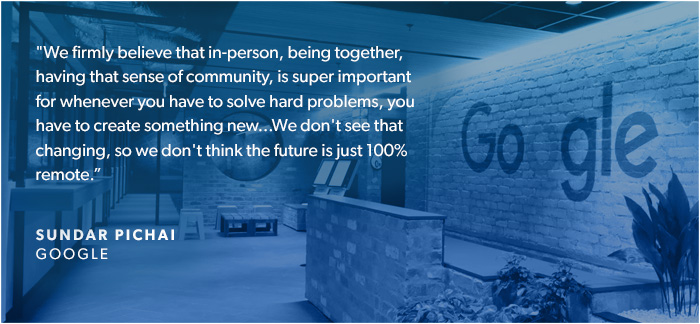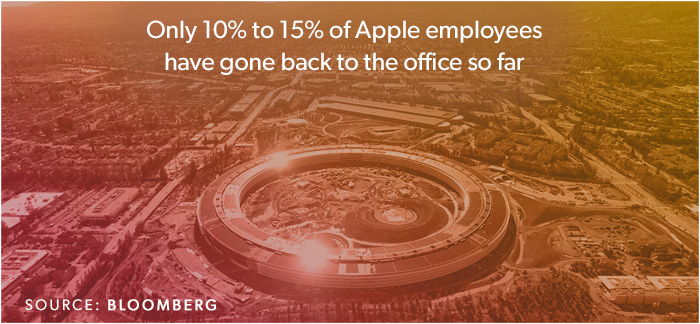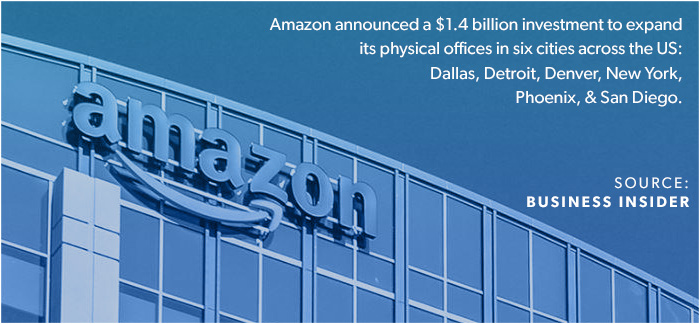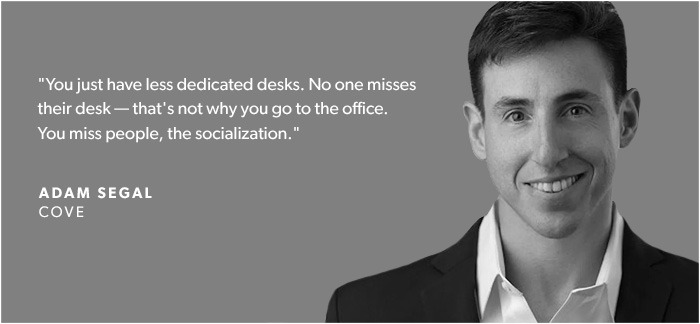We are all in search of answers that don’t quite exist yet. We’re juggling jobs and family, reading and research, wellness and productivity. We’re coworkers, psychologists, forecasters and medical experts, not to mention whatever our job titles say we are.
The Salve was created to be your partner. A collective of people under similar circumstances trying to fulfill similar roles, who are willing to share their findings to help shoulder the unreasonable workload of today.
Enjoying The Salve? Get the latest edition sent directly to your inbox!
If we’re riding the pandemic pendulum when it comes to predicting office use in the future, the good news is we seem to be approaching center in our assumptions. Whether it is referred to as “the hybrid” or “hub and spoke” model, the center of oscillation for larger corporations seems to lead in this direction.
Google has been “reconfiguring” its office spaces to accommodate what CEO Sundar Pichai called “on-sites” — presumably, days when employees, who work mostly from home, gather in the office. This hints at plans to create a hybrid office model for employees of the tech giant.
Google has long had a philosophy of creating a fun office environment and reducing friction when possible — therefore Mr. Pichai sees it to be the company’s responsibility to improve employees’ personal lives when given the opportunity.
Apple
Tim Cook recently said that he does not believe Apple will return to office policies of the past, because he says, “we’ve found that there are some things that actually work really well virtually”. Acknowledging the limits, he followed by noting that remote work is “not like being together physically.”
Hub & Spoke / Remote First
The hub and spoke model emphasizes the importance of satellite offices while reconsidering the value and purpose of a company headquarters. The model would have companies establish a “hub,” or headquarters, in a major city with “spokes” anywhere in America connected by the same technology system.
Breaking that real estate model down further, a “remote-first” work schedule would mean that an employee’s default location to conduct work would be outside of their headquarters building, either at a home office or coworking space. That employee would then commute to a satellite office closest to their home when necessary to participate in more collaborative work and to meet with their team.
Amazon, Apple, and Uber have already started to adopt something similar. This is not a one size fits all model, however. Some jobs that require physical presence, such as maintaining servers, will still require employees to come in.

